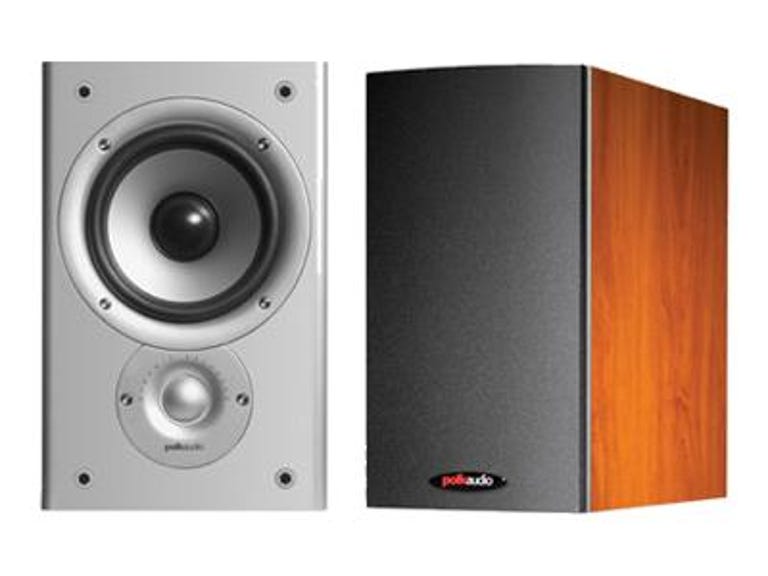 Why You Can Trust CNET
Why You Can Trust CNET Polk Monitor 30 review: Polk Monitor 30
Polk Monitor 30
We live in the Age of Retro. Chrysler's Hemi engine has roared back with a vengeance, Peter Jackson is busily working on his souped-up King Kong, and Polk Audio is reintroducing its legendary Monitor line. The original mid-'70s-era Monitor Series set a high standard for performance and put Polk on the map, helping turn it into one of the largest speaker companies in the United States. The Monitor 30, the new lineup's entry-level bookshelf model ($239 per pair), may not have the same impact, but it's certainly a solid value in the compact class. Standing 11 inches high and 7 inches wide and prefitted with a metal bracket for easy wall mounting, the styling of the 9-pound Polk Audio Monitor 30 doesn't stray too far from the classic box-speaker form, but the bright titanium baffle and curved grille add 21st-century flair. After you remove the grilles, you'll notice the engineers have inverted the typical tweeter-on-top-woofer-on-the-bottom alignment. The Model 30 is available in two styles: faux cherry veneer or black finish.
The Monitor Series includes a larger bookshelf model (the Monitor 40), three towers, two center speakers, and two subwoofers. For this review we partnered two pairs of Monitor 30s with Polk's smaller CS1 center and the PSW10 subwoofer. The complete 5.1 system we tested retails for $879, but you can mix and match other Monitor models for your system. Want to go all out and surround yourself with a 7.1 Monitor ensemble? That'll run $1,118. Shop around a bit, and you'll shave at least 25 percent off those quoted retail prices.
The Good
The Bad
The Bottom Line
The speaker's double set of heavy-duty connectors offer the possibility of biwiring (attaching two sets of wire to each speaker) or biamping (using two amp channels to drive each Monitor 30). These upgrades can result in improved sound quality over that of everyday single-wire, single-amp operation. The five-way binding posts accept bare wire, banana jacks, U-shaped spades, or pins.
For our home-theater and surround evaluations, we added two more Monitor 30s, a Polk CS1 center speaker, and a Polk PSW10 subwoofer. The complete Monitor system doesn't suffer from the sort of midbass deficit we hear with so many small subwoofer/satellite systems. Bass-heavy CDs such as Morphine's The Night sounded wonderfully full and weighty. The blend between the 30s and the PSW10 subwoofer was perfectly executed, and the pitch definition was right on the money. Ably assisted by the PSW10, the 30 sounds like a much larger speaker.
We next exercised the Monitor system's home-theater talents with the Pearl Harbor DVD. The sounds of propeller planes cranking up their engines erupted with fury, and later on, the planes seemed to swoop over our heads. When the Japanese planes bombed Pearl Harbor, the fierce explosions didn't fluster the Monitors. The speakers' dynamic impact and power are state of the art for a system in this price class. One downside: the film's lush score sounded a little rough compared to what we hear from more expensive Polk and NHT speakers.
A face-off with Energy's Act6 speaker package surprised us. The sound of the two systems was more similar than we expected. Yes, the Act6's treble range was a little more refined and delicate, but the Monitor system's beefier midbass response was obvious, and the Monitors could play a bit louder without distress. Clearly, the spiffy new Monitor ensemble is a worthy successor to the original models.


